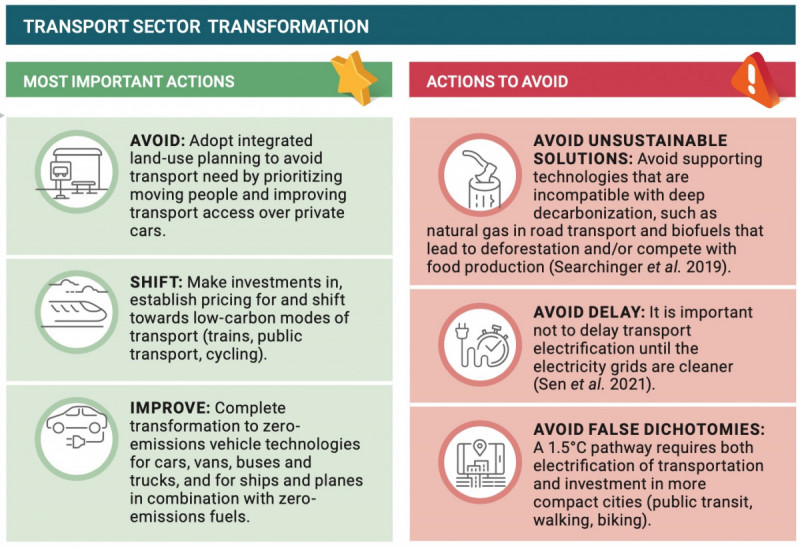This week, United Nations Secretary General António Guterres stated starkly “We are on a highway to climate hell with our foot on the accelerator.” The agency’s Emissions Gap Report 2022: The Closing Window is an alarming read, finding that the adopted policies of all the world’s nations would lead to global warming of 2.8°C over this century – an apocalyptic outcome.
The report also lays out a priority list of transformations to pursue and mistakes to avoid for the world to slash emissions to safe levels. Transportation is the largest source of greenhouse gas (GHG) emissions in the US and the Greater Washington region. The United Nations call-to-action says that rapidly reducing transportation emissions “requires both electrification and investments in more compact cities (public transit, walking, biking).”

While the national governments hash out challenging climate commitments at the UN COP27 conference in Egypt and beyond, cities and suburbs who collectively contribute over 70% of worldwide GHG emissions, don’t need to wait and can take bolder action now. The Coalition for Smarter Growth (where I am senior policy fellow) and partners across the region have been calling for this bolder action on land use and transportation.
Climate science: avoid locking-in decades of pollution from car-centered planning
We need walkable, compact, transit-oriented communities, shifting more travel to walking, biking and transit, and a transition to electric vehicles, according to the UN Emissions Gap 2022 report. This is consistent with what local DC region, national, and international studies have already shown.
The red actions to avoid (shown above) are of particular note – there’s no time or resources to waste on making these known mistakes, according to the report:
Actions today that lock in a high-energy and high-carbon future for decades must be avoided, including avoiding new fossil fuel infrastructure for electricity and industry, car-centred city or regional planning, and inefficient new buildings.
US urban areas and states have a choice on transportation pollution
Colorado recognized this in its state climate legislation, ensuring transportation plans support greenhouse gas targets. As a result, the Denver region canceled two planned highway expansions for climate reasons and shifted funding instead to walking, biking and transit investments.
Nationally, how urban areas and states spend their flexible funds in the 2021 Bipartisan Infrastructure Law will make a real difference. If they choose to allocate more funds to bigger highways rather than fixing infrastructure and prioritizing rail, transit, walking and biking, it would make the transportation climate problem even worse than it was before the Infrastructure bill.
How is Greater Washington avoiding or worsening car emissions “lock-in”?
Let’s look at how this plays out in our region’s two major transportation plans that are being updated now:
- Visualize 2045,the long-range transportation plan for the entire National Capital region, allocates almost $30 billion to expanding highways and roads, in contrast to about half that for improving transit, rail, walking and biking. At the same time, the Transportation Planning Board, which drafts the plan, voted to slash emissions from transportation by 50% by 2030 and committed to an early update of Visualize 2045 starting this winter. This is an opportunity for residents of suburban MD, DC, and Northern VA to demand that their local officials prioritize climate and make necessary changes to the projects they submit for inclusion in the revised Visualize 2045.
- TransAction, the draft long range plan of the Northern Virginia Transportation Authority, proposes 1,000+ new miles of highway and arterial lanes that increase per capita driving by 3% overall and over 9% in the outer suburbs. As a result, TransAction doesn’t reduce climate pollution compared to future projections without the plan, despite proposing a record $76 billion in spending and listing “Sustainability” as a core value.
The UN makes clear that we have to shift course now, including in our transportation investments. Yet, the DC region is still not doing enough to avoid the “highway to climate hell.” Greater Washington has the know-how and resources to do our part to stop the climate crisis and create the kind of region we want. We can and should be national and international leaders.
